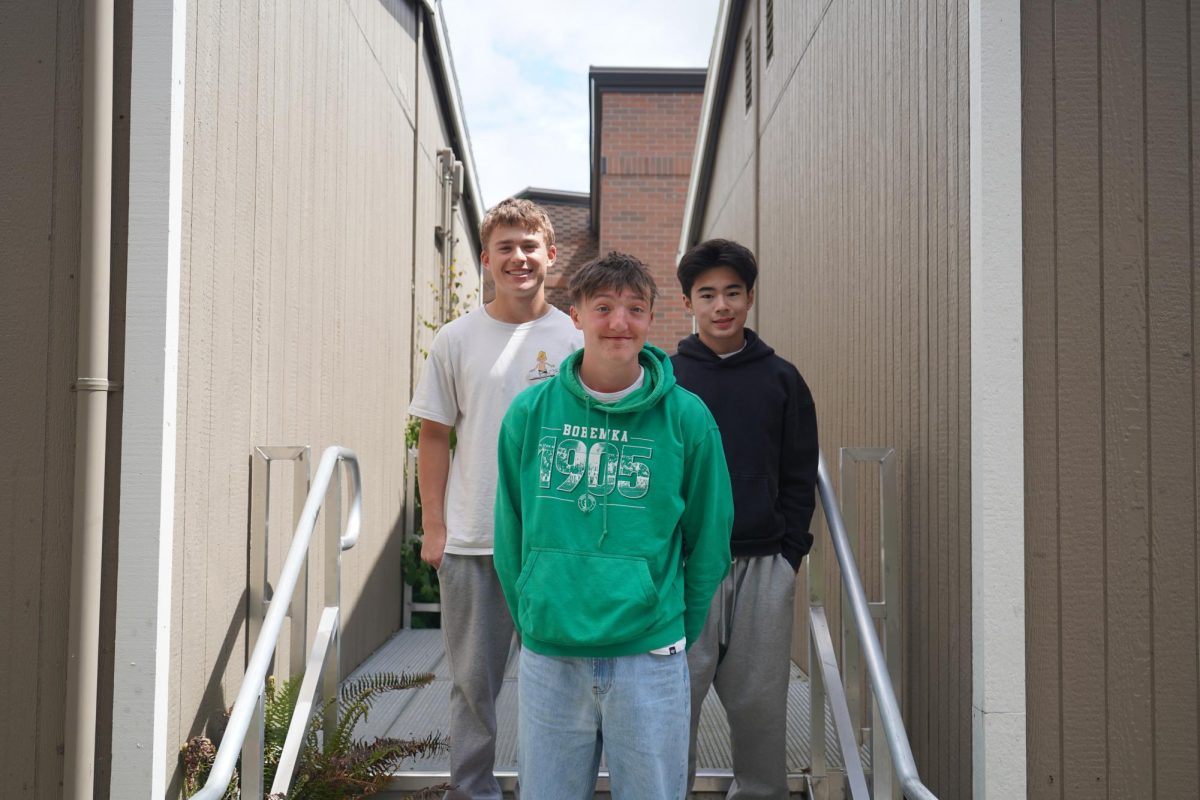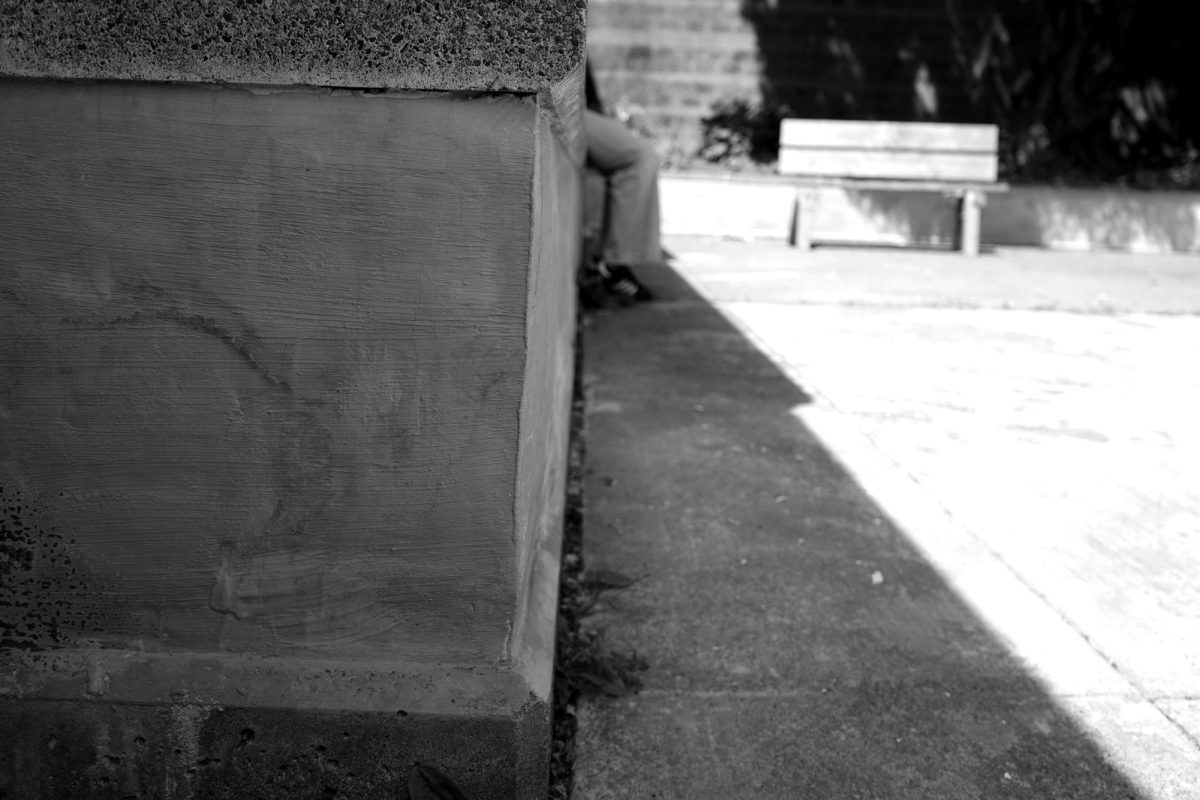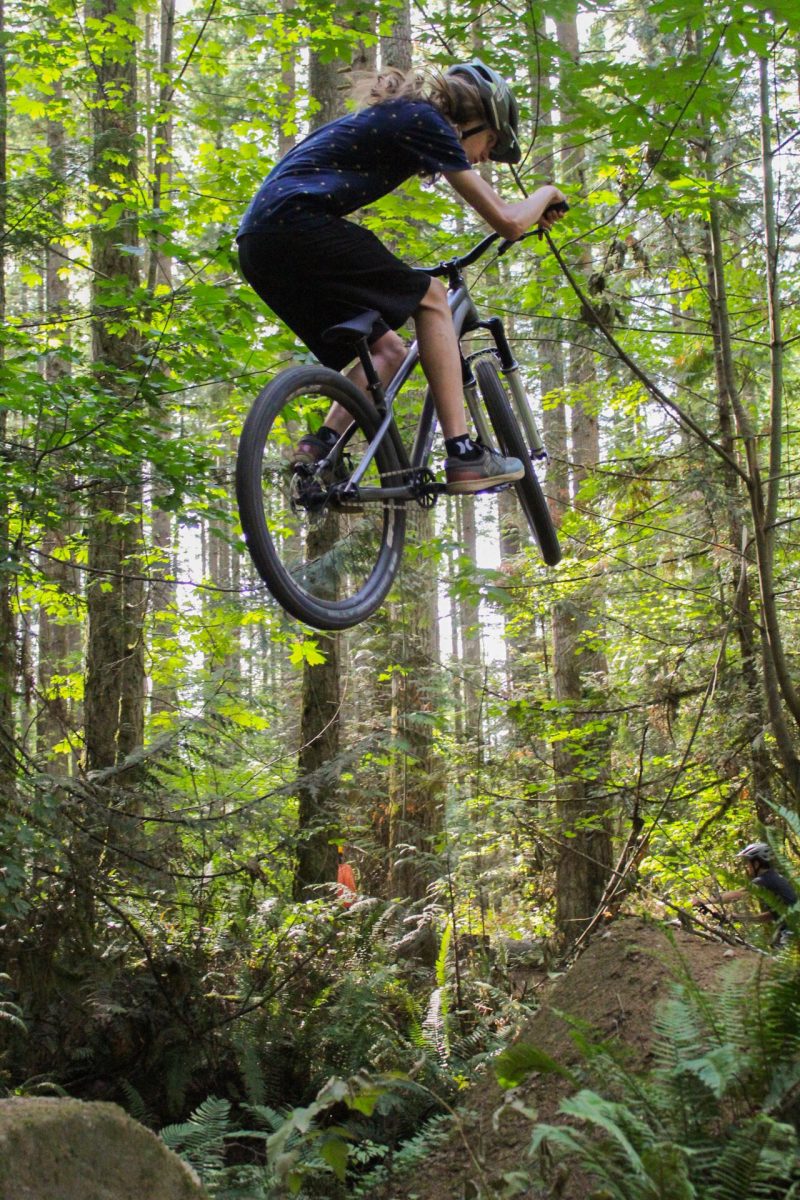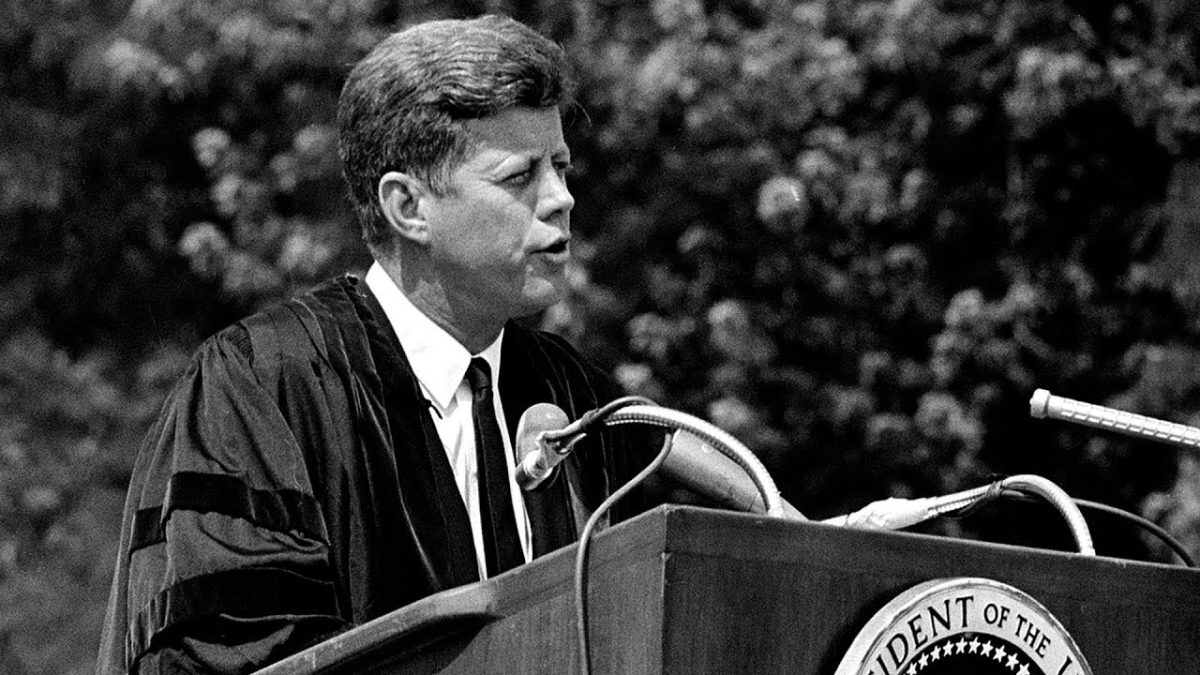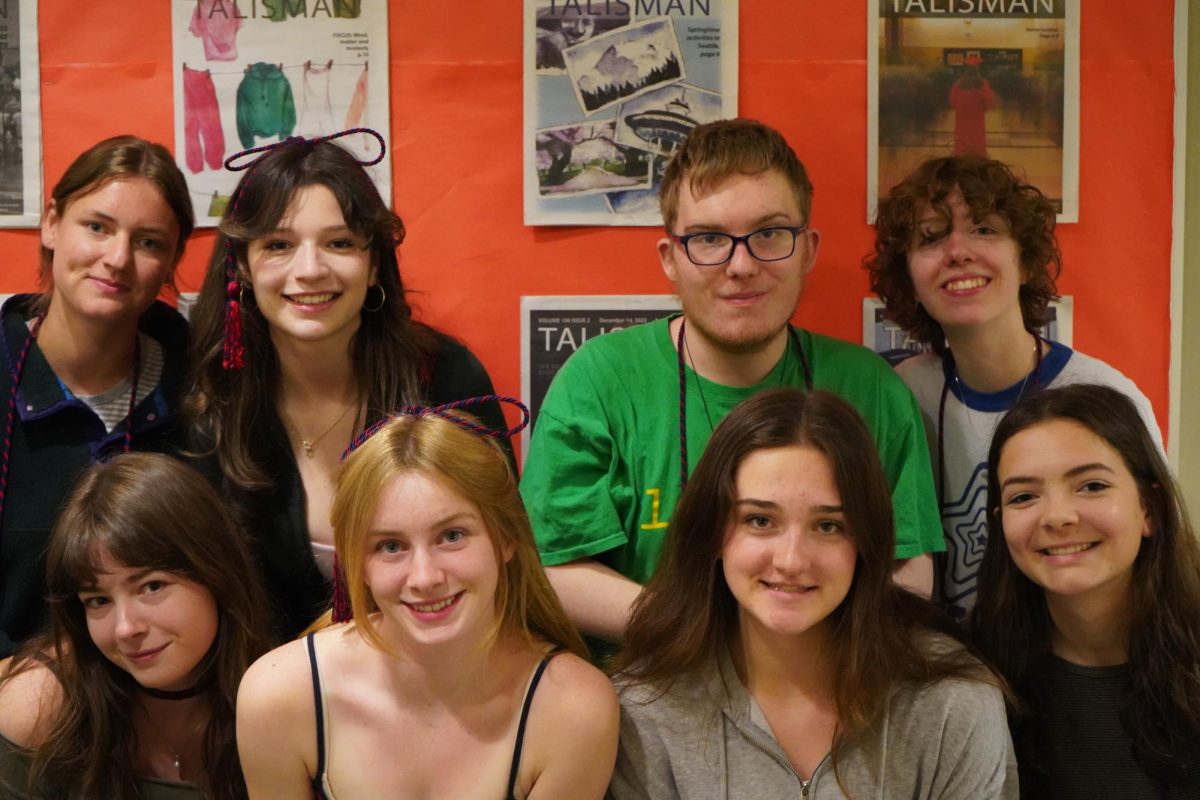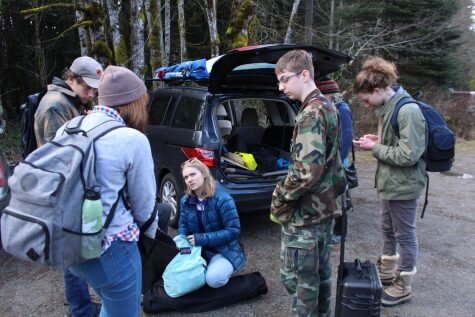Olivia Burdick, Staff Reporter
Originally published May 3, 2017
Miles Whitworth
Film students set up for their daily shoot along the Elwha River near Port Angleles. The Ballard Digital Filmmaking Program has been producing two documentaries about local environmental issues for IMAX and the All American High School Film Festival. The documentaries are to be released in early June.
The All American High School Film Festival (AAHSFF) chose the BHS Digital Filmmaking Program to be one out of five other exceptional programs to receive a $5,000 grant from IMAX. The AAHSFF is the largest high school film festival in the nation, which draws competition nationwide. The announcement for which schools were selected for the In Focus grant was made on Oct. 7, 2016, in New York City.
The In Focus grant from IMAX was created to highlight the work of young filmmakers, by asking them to make documentaries that inspire their audiences to improve the planet. IMAX will award a grant of $5,000 to four high schools and one non-profit film workshop, selected by the AAHSFF. These schools are considered to have exemplary programs.
The BHS film program was selected purely from their already stellar reputation, that is known throughout the nation. This project will without a doubt push that reputation up even higher.
IMAX has explicitly given the winners of the grant a task that isn’t an easy feat. The young filmmakers were asked to create documentaries that put a spotlight on today’s most compelling environmental, societal and economic issues.
Under these guidelines, each program has to create an eight-minute documentary and produce related social media content.
The film program at Ballard has two different teams that are filming with the grant money. One team is filming for the Bullitt building in Seattle, a 100 percent sustainable building. The other team is the team documenting the removal of dams on the Elwha River near Port Angeles.
The students on the Elwha Dam team are documenting the history of where the dam is, Port Angeles, from the early 1900s to now, focusing on the dams effect on the river and community.
The shooting crew for the Elwha group consisted of senior Cecilia O’Rollins, juniors Miles Whitworth, Jasper Land, Chris Barrett, Martin Bolivar, senior Aaron Miller and sophomores Freeman Marshall and Maddie Lausted, however the whole digital filmmaking class assisted in some way.
In the early 1900s two dams, the Elwha Dam and Glines Canyon Dam, were put in on the Elwha river by Canadian business man, Thomas Aldwell. The Dams were designed in a way that made it so there wasn’t passage for fish through each dam and the rest of the river.
“
We went to the sight where the dams were and there was this giant lake and now it’s all gone and it’s just this river”
— senior Cecilia O’Rollins
Before the dams were put in, fish, especially salmon, swam up and down the river and many habitats flourished throughout the area. After the dams were put in, denying access to 83 percent of the river, the fish were trapped, which didn’t allow the salmon to reproduce properly.
The restriction of fish passage through the river caused a second problem–the Lower Elwha Klallam tribe had lost their main source of food. Before the dam was put in the tribe would fish up and down the river both for their own food and for their income.
“It was so crazy. We went to the sight where the dams were and there was this giant lake and now it’s all gone and it’s just this river,” O’Rollins said. “It was just so weird, you could see where the lake had been and there was all this fresh growth and it was just really neat to look at.”
In 1992, the dams were up for relicensing and there was harsh opposition to getting the dams relicensed. The Lower Elwha Klallam tribe stepped in, protesting relicensing for the dams. The tribe opposing relicensing claimed that the dams were doing more harm than good because they weren’t generating a lot of power and they were awful for the environment.
From our little bubble in the Pacific Northwest, a group of high school students are reaching audiences nationwide, conveying messages about environmentalism that could change how people think, and potentially change the world.

